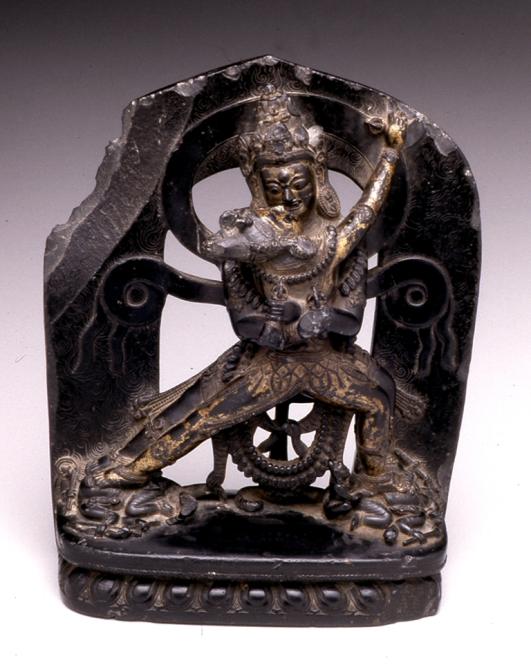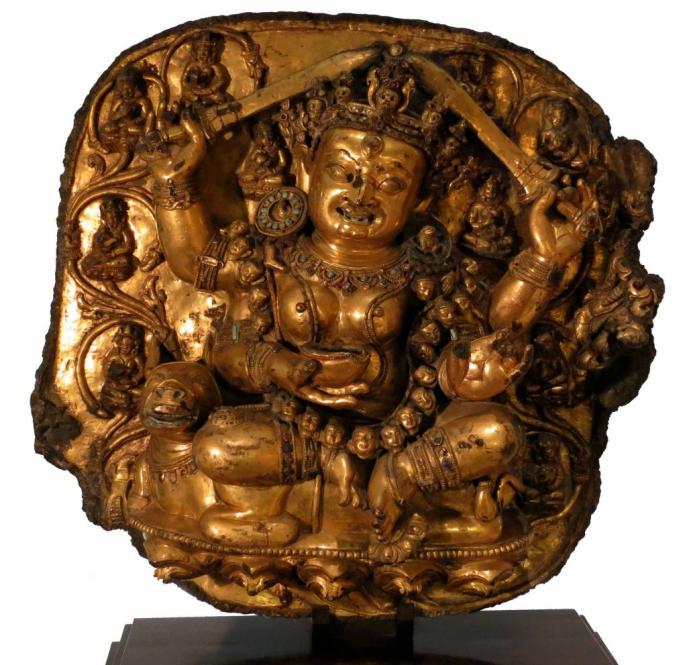25.269

Object Title
Chakrasamvara Embracing Vajravarahi
Measurements
7 x 5 1/2 x 2 1/4 in. (17.8 x 14 x 5.7 cm)
Creation Date
11th century
Credit Line
Gift of John and Berthe Ford, 2015
Museum Name
Museum Contact
provenance@thewalters.org
Culture
Country of Origin
Object Type
Object URL
http://art.thewalters.org/detail/30490
Museum's Definition of Antiquity
The Walters Art Museum is in the process of determining the definition of antiquity..
Provenance Information
Sonam Tashi, Kathmandu, Nepal [date and mode of acquisition unknown]; John and Berthe Ford, Baltimore, July 1984, by purchase; given to Walters Art Museum, 2015.
Exhibition Information
Desire and Devotion: Art from India, Nepal, and Tibet in the John and Berthe Ford Collection. The Walters Art Museum, Baltimore; Santa Barbara Museum of Art, Santa Barbara; Albuquerque Museum, Albuquerque; Birmingham Museum of Art,
Publication Information
Pal, Pratapaditya, et. al. Tibet: Tradition and Change. Albuquerque: The Albuquerque Museum, 1997.; Pal, Pratapaditya. Desire and Devotion : Art From India, Nepal, and Tibet in the John and Berthe Ford Collection. Baltimore, Md. : Walters Art Museum ; London : Philip Wilson. 2001.
Section of the AAMD Guidelines relied upon for the exception to 1970
Gift or bequest expected or on loan prior to 2008
Explain why the object fits the exception set forth above
A Memorandum of Understanding between the Walters Art Museum and John and Berthe Ford about this promised gift was signed September 1997.
